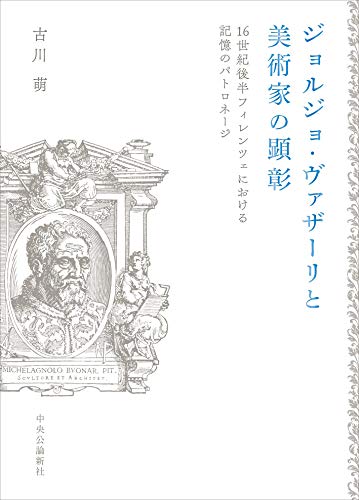9 0 0 0 OA 追悼の建築としての伝記集 : ヴァザーリ『芸術家列伝』再考
- 著者
- 古川 萌
- 出版者
- 美学会
- 雑誌
- 美學 (ISSN:05200962)
- 巻号頁・発行日
- vol.65, no.1, pp.49-60, 2014-06-30
The lives of the artists, or Vite, written by an Italian painter and architect Giorgio Vasari (1511-1574), has been considered as one of the most important works in art historiography. However, since Vasari has shown the development of artistic styles and the triumph of maniera moderna in this work, a simple fact seems to have been overlooked for quite a long time, that this book is substantially a collection of artists' biographies, rather than an extensive treatise on the history of art. This essay returns to the fact, and attempts to reconsider the structure and purpose of this book. Epitaphs and woodcut portraits of artists contained in Vite are examined to demonstrate how Vasari views these biographies as funerary monuments to assure their eternal fame, making the whole book a temple to house them. Through the analysis, Vite will also reveal itself as a tool to promote Cosimo I de' Medici's artistic patronage. This is achieved by echoing the act of mourning their artists, which was practiced by such people as Cosimo il Vecchio de' Medici and Lorenzo de' Medici, consequently emphasizing the continuity from the Florentine Republic era.
- 著者
- 古川 萌
- 出版者
- 美学会
- 雑誌
- 美学 (ISSN:05200962)
- 巻号頁・発行日
- vol.69, no.2, pp.88, 2018 (Released:2020-03-23)
1 0 0 0 OA トスカーナ大公国初期におけるコレクション陳列室 「カリオペの書斎」からトリブーナへ
- 著者
- 古川 萌
- 出版者
- 美学会
- 雑誌
- 美学 (ISSN:05200962)
- 巻号頁・発行日
- vol.68, no.2, pp.165, 2017 (Released:2019-01-02)
1 0 0 0 OA 追悼の建築としての伝記集 : ヴァザーリ『芸術家列伝』再考
- 著者
- 古川 萌
- 出版者
- 美学会
- 雑誌
- 美学 (ISSN:05200962)
- 巻号頁・発行日
- vol.65, no.1, pp.49-60, 2014-06-30 (Released:2017-05-22)
The lives of the artists, or Vite, written by an Italian painter and architect Giorgio Vasari (1511-1574), has been considered as one of the most important works in art historiography. However, since Vasari has shown the development of artistic styles and the triumph of maniera moderna in this work, a simple fact seems to have been overlooked for quite a long time, that this book is substantially a collection of artists' biographies, rather than an extensive treatise on the history of art. This essay returns to the fact, and attempts to reconsider the structure and purpose of this book. Epitaphs and woodcut portraits of artists contained in Vite are examined to demonstrate how Vasari views these biographies as funerary monuments to assure their eternal fame, making the whole book a temple to house them. Through the analysis, Vite will also reveal itself as a tool to promote Cosimo I de' Medici's artistic patronage. This is achieved by echoing the act of mourning their artists, which was practiced by such people as Cosimo il Vecchio de' Medici and Lorenzo de' Medici, consequently emphasizing the continuity from the Florentine Republic era.
- 著者
- 古川 萌
- 出版者
- 美学会
- 雑誌
- 美学 (ISSN:05200962)
- 巻号頁・発行日
- vol.64, no.2, pp.134, 2013-12-31 (Released:2017-05-22)




